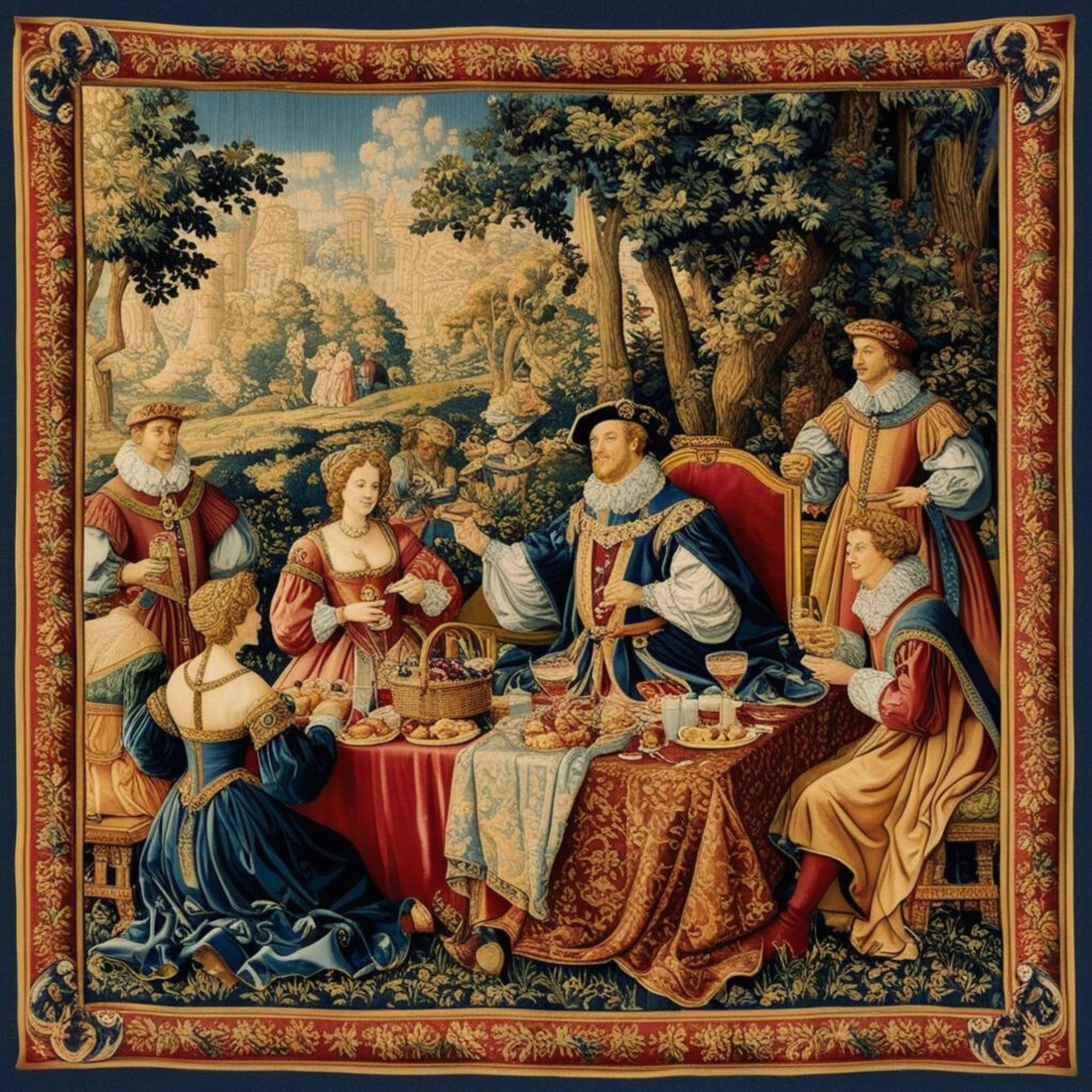
The Rise of the Merchant Class!
Ah, dear reader, let us weave our way through history and unfold the rich tale of tapestries in the Late Medieval period, notably influenced by the ascent of our resourceful friends—the merchant class. Once a luxury exclusively commissioned by nobility and clergy, tapestries began to reflect the changing tapestry (if you'll pardon the pun) of society itself.
With burgeoning trade and flourishing commerce across Europe in the 14th and 15th centuries, merchants emerged as influential patrons of the arts, their pockets heavy with newfound wealth from textiles, spices, and precious metals. Now, these industrious individuals sought to display their status and sophistication, turning eagerly to the tapestry-makers of Bruges, Arras, and Tournai. The merchant's coin was as welcome as the nobleman's, leading to a broader variety of subject matter that captured scenes from everyday life, allegorical representations of commerce, and even the merchants themselves—imagine a proud trader immortalized alongside kings and saints!
The newfound prosperity from merchant patronage enabled tapestry workshops to expand, refining their techniques and artistic quality. Demand surged, prompting artisans to innovate with richer colors and more intricate designs. No longer mere wall-hangings, these pieces became storytelling masterpieces, vibrant witnesses to cultural shifts driven by commercial success.
Yet not all embraced this change enthusiastically. Traditional aristocratic circles watched with mild disdain as merchants, once considered mere peddlers, ascended into spheres of cultural influence traditionally reserved for nobility. Nevertheless, the merchants' impact upon tapestries was irreversible, democratizing art in ways previously unimaginable and forever enriching Europe's artistic heritage.
Thus, we see how the humble merchant, purse brimming with silver, threaded new narratives into the warp and weft of medieval society—quite literally!
References:
· Cavallo, Adolfo Salvatore. Medieval Tapestries in the Metropolitan Museum of Art. Metropolitan Museum of Art, 1993.
· Campbell, Thomas P. Tapestry in the Renaissance: Art and Magnificence. Yale University Press, 2002.
